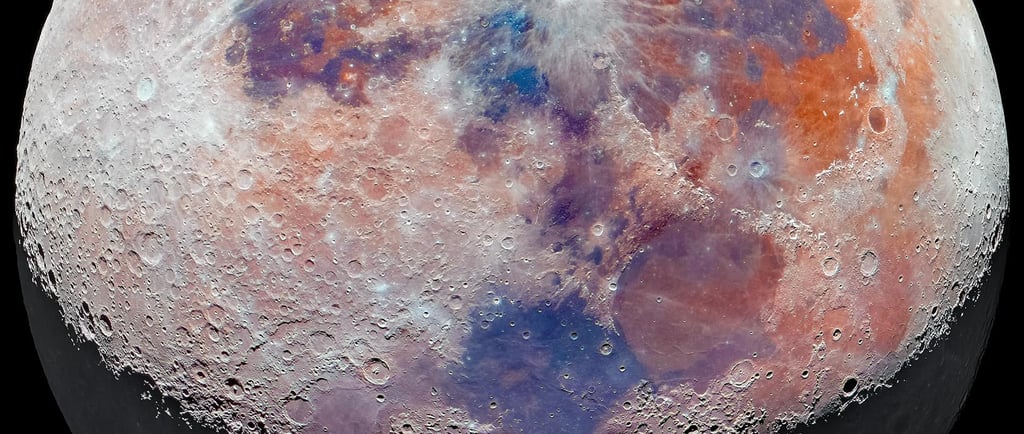The Coloration of the Moon: Titanium and Iron Oxides


The Moon's Surface Composition
The Moon has fascinated humanity for centuries, captivating our imaginations and igniting our scientific curiosity. One of the most striking features of the lunar surface is its varied coloration, which serves as a window into its geological composition. The blue regions on the Moon are primarily composed of titanium oxide, while the orange-pink regions contain iron oxide minerals. This article examines the significance of these chemical compounds and what they reveal about our nearest celestial neighbor.
Titanium Oxide: The Blue Regions
The blue areas found on the Moon's surface primarily consist of titanium oxide, a compound that has garnered interest due to its unique properties. Titanium oxide is known for its high strength-to-weight ratio and has applications in various industries, including aerospace and electronics. On the Moon, this mineral indicates regions that were formed by ancient volcanic activity. The presence of titanium oxide not only highlights the Moon's geological history but also suggests that these areas may have potential resources for future lunar exploration and habitation.
The Significance of Iron Oxide
In contrast, the orange-pink regions of the Moon's surface are rich in iron oxide minerals. These regions are believed to have formed through processes related to the Moon's volcanic history as well. Iron oxide displays a range of hues, from rust-orange to bright pink, depending on the specific minerals present and their oxidation levels. The study of these regions is essential for understanding the Moon's geological evolution and the processes that have shaped its surface over billions of years.
The presence of iron oxide minerals is not only significant for scientific research but also for potential future lunar missions. Understanding the distribution of these minerals can inform resource utilization strategies, as iron is a key element in construction and could support human activities on the Moon. The study of the Moon's diverse coloration and composition presents a remarkable opportunity for researchers to deepen their knowledge of both lunar and terrestrial geological processes.
In conclusion, the unique coloration of the Moon provides critical insights into its surface composition. The blue regions, composed of titanium oxide, and the orange-pink areas rich in iron oxide minerals tell us about the Moon's geological history and potential resources. As we venture further into space exploration, understanding these features will play a crucial role in advancing our knowledge and preparing for future missions to the Moon.
